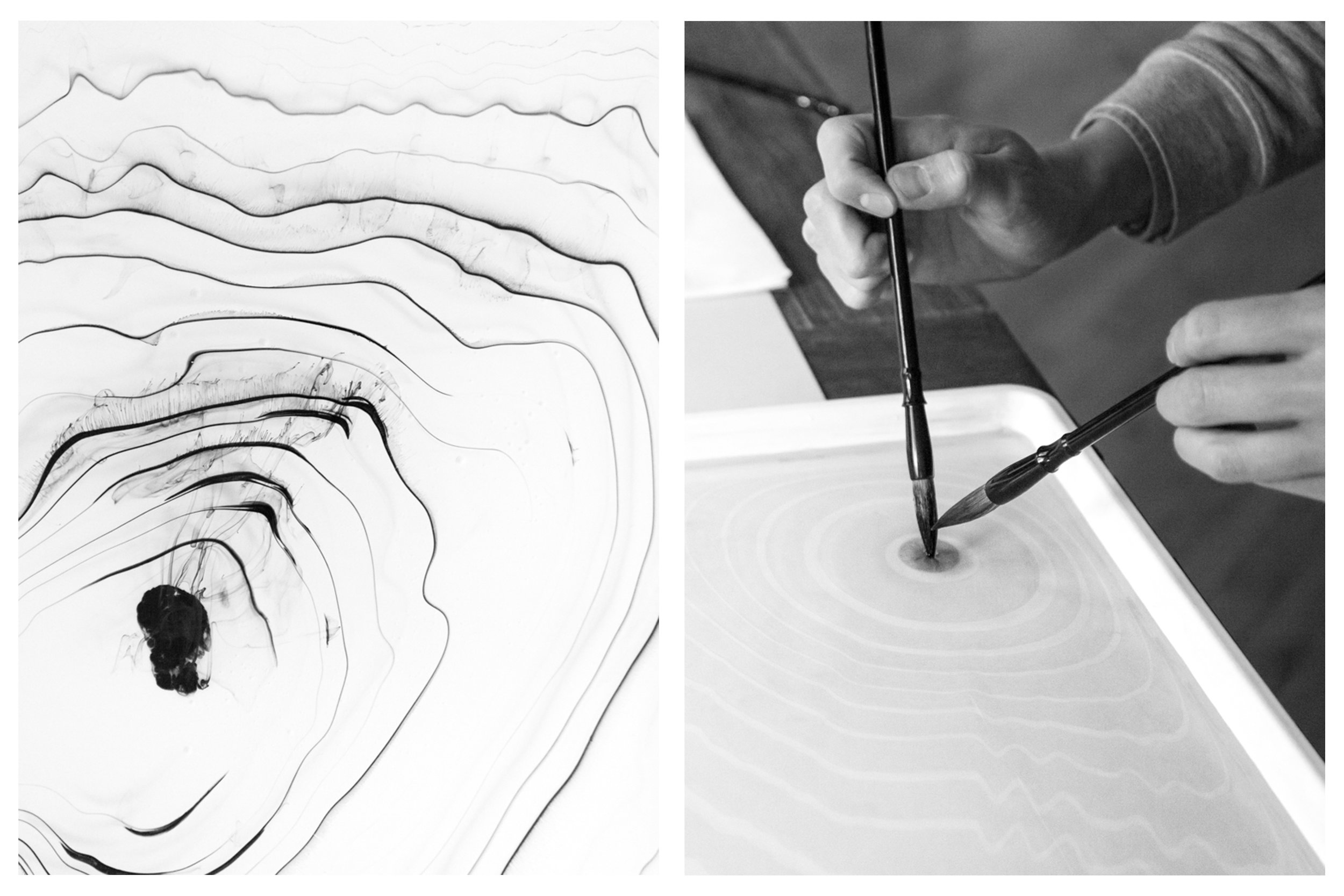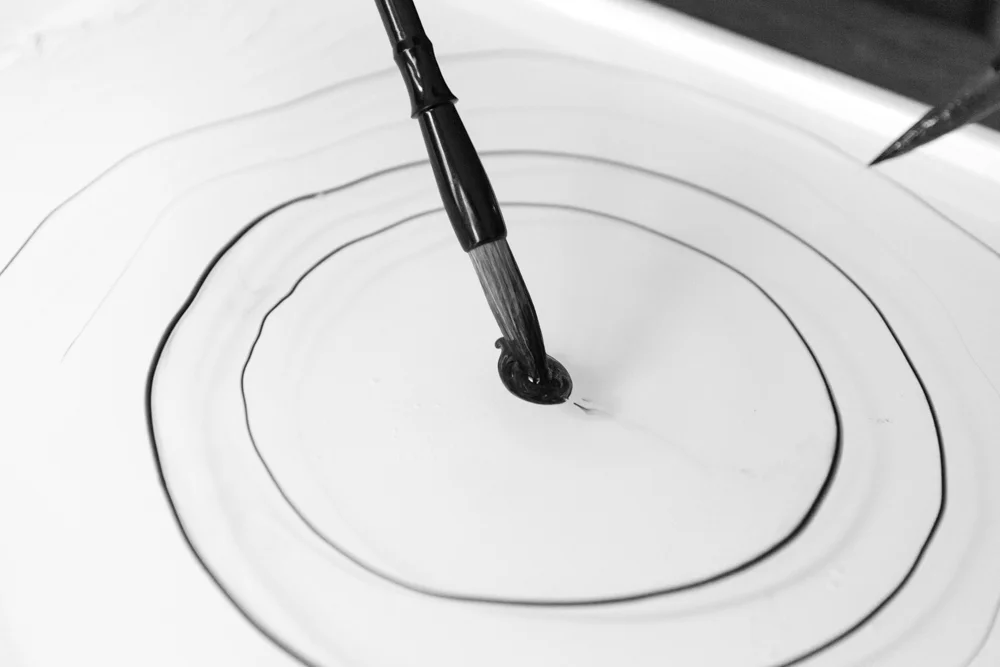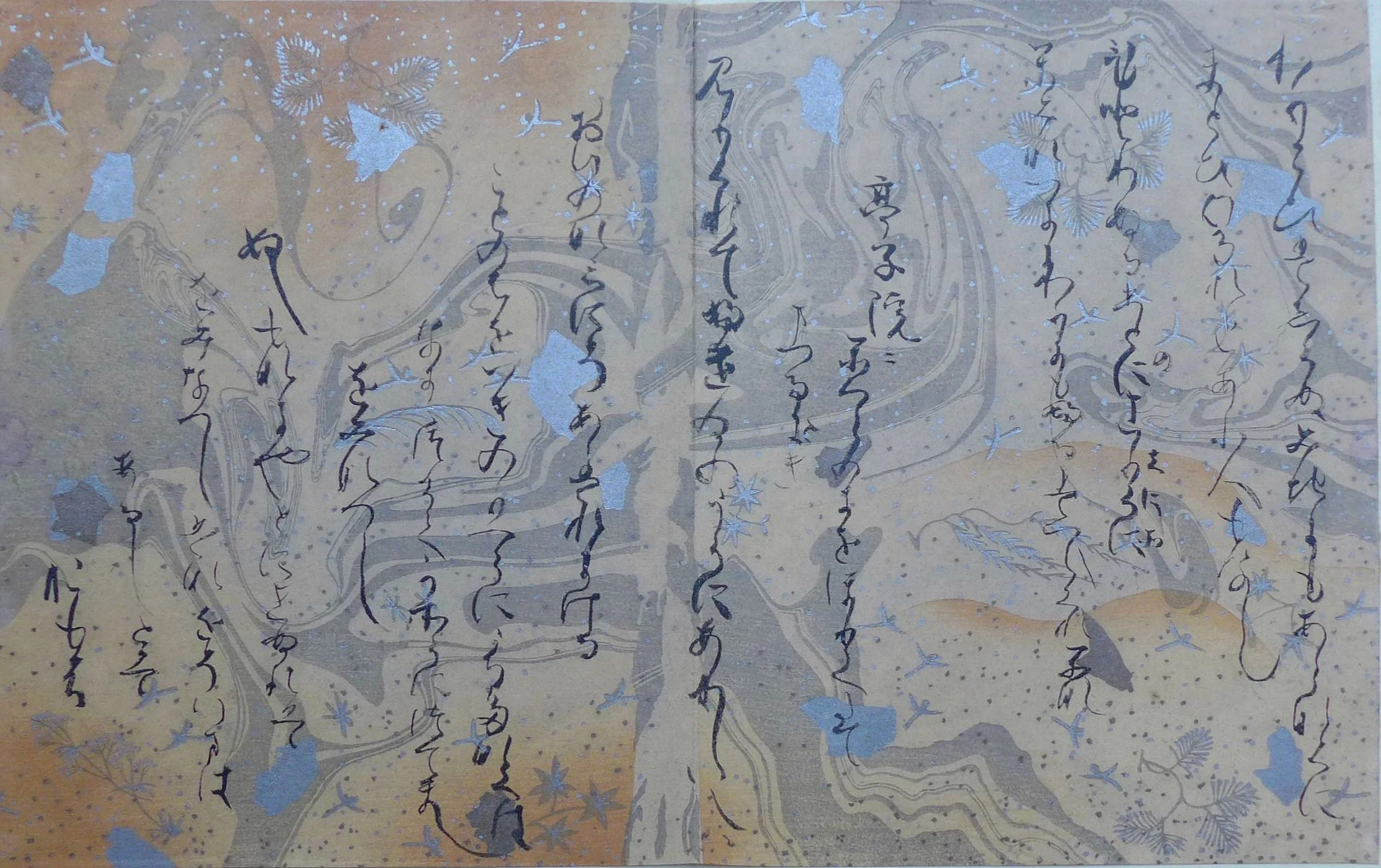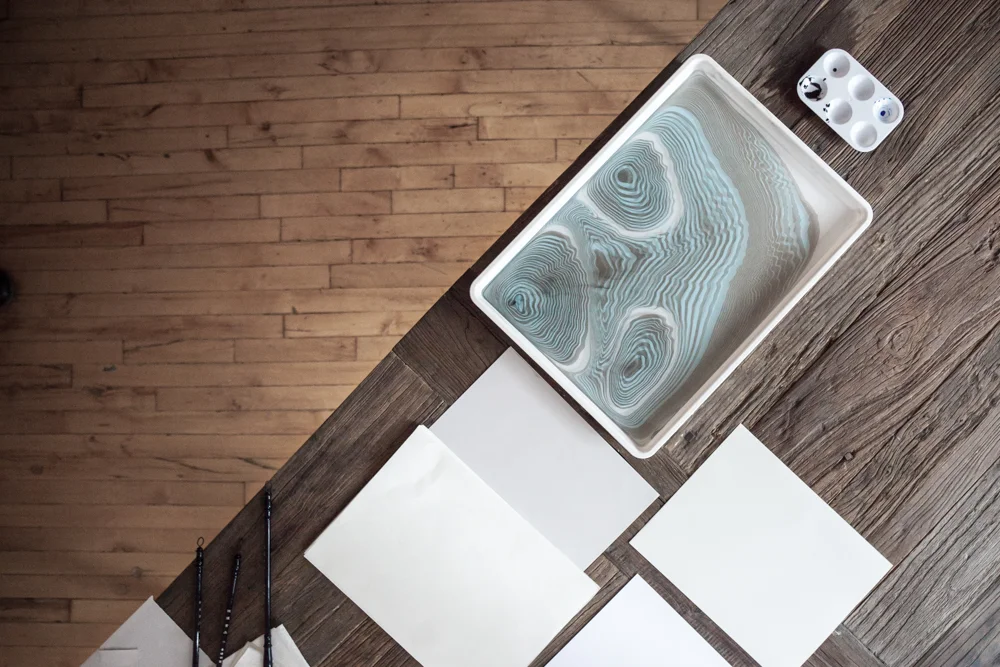Liquid Marble: The Meditative Appeal of Suminagashi
There is a certain feeling of anxiety that all artists share when standing before a blank canvas, brush in hand, deciding where to place their first stroke. The act of committing lines to a piece (or notes to a sonata, or spices to a dish, or..) puts immense pressure on the artist who knows that one false move pushes them farther from their intended outcome. In this way, paper marbling, an art mostly left up to chance, is a welcome release.
A Diverse Artform
Paper marbling is an ancient art form that has been independently developed by artists and cultures over several centuries. By combining water, ink, and unique ratios of additives and chemicals, these artisans created one-of-a-kind works of art that are as unique as the artists that made them. Turkish, Persian, and Indian artist practiced ebru on a more viscous surface than water (known as size or sizing in English). Europeans, used the papers to bind their alba amicorum, or “books of friendship”, which were early examples of the autograph album, and in Japan, marblers practiced suminagashi which fully embraced the unplannable aspects of this spontaneous art form.
Brief History
References to Suminagashi, or “floating ink”, are seen as early as 825 CE and the earliest known examples are in the Sanjuurokuninshuu (a collection from 36 Waka poets) created in the 12th century in Kyoto. The art was popular with the Japanese royal court, where they would dip pages of inked paper into water in order to watch the organic shapes appear. Suminagashi developed alongside washi paper, which is the paper commonly used to transfer the ink onto.
An early example from the Sanjuurokuninshuu. Image via Wikipedia
The Beauty of the Unknown
Suminagashi is a simple endeavor. A shallow tray of room temperature water is your canvas. Inks and surfactants are your paints. Many of the best designs are achieved with only two colors in order to create a bold contrast. Concentric spirals of color jet out from the tips of your brushes as you dip them in rapid succession. Your only say in the design is where you dip the brush and for how long. Despite such limited control, the spirals spin and dance across the surface of the water making patterns and shapes that last only a moment before morphing into something else entirely. It’s only when you drop your paper into the water that the moment in time is captured.
Our store workshop this month will be a hands-on demonstration of suminagashi print making lead by our staff. Details can be found on our workshop page. Unfortunately, at the time of this post, the event has sold out but given the positive response we will likely hold another session again in the near future. Sign up for our newsletter to stay in the know!
WORDS BY SAM GEAN




